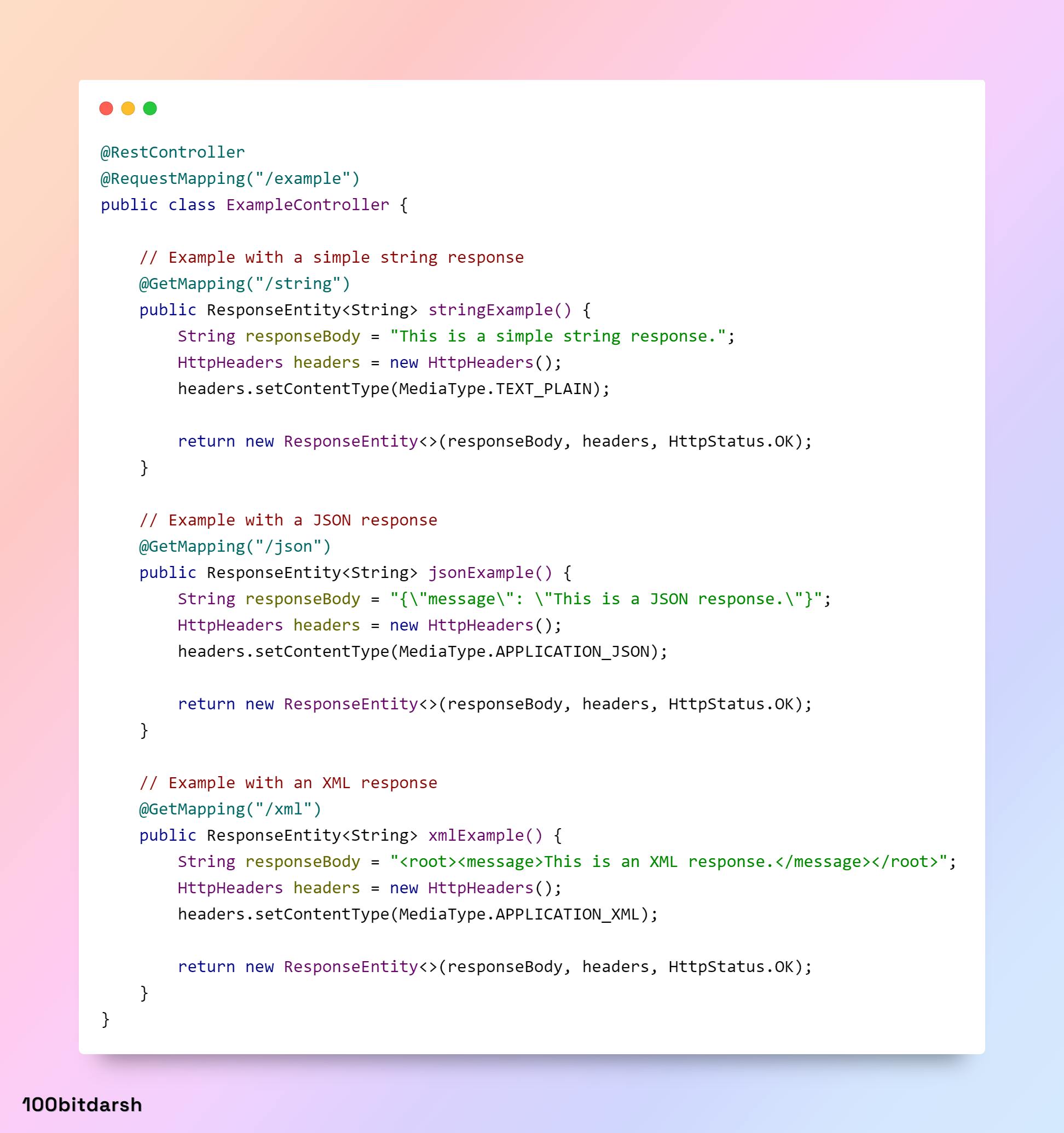1. Introduction:
In the Spring framework, ResponseEntity<T> is a powerful class that represents a complete HTTP Response. ResponseEntity<T> encapsulates the body, headers, and status code in an HTTP Response. With the help of ResponseEntity<T>, we can fully configure the HTTP Response.
ResponseEntity<T> is an extension of the HttpEntity<T> class in the Spring framework. The HttpEntity<T> class allows you to represent an HTTP Response, consisting of the body and headers only. ResponseEntity<T> builds upon this by adding an HttpStatusCode, providing a more comprehensive representation of an HTTP Response that includes the body, headers, and status code.
ResponseEntity<T> is a generic type, which means we can use any type for the response body.

2. Where to Use ResponseEntity<T>:
It is used as a return type with
RestTemplate.In
RestTemplate, this class is returned bygetForEntity()andexchange():
This can also be used in
Spring MVCas the return value from an@Controllermethod:
3. Key Features of ResponseEntity<T>:
Status Code:
ResponseEntityallows developers to set the HTTP status code for the response. This provides flexibility in indicating the success or failure of a request.Headers:
ResponseEntityhelps in the customization of HTTP headers. Developers can set headers like Content-Type, Cache-Control, or any other necessary for their specific use case.Body Content:
Developers can set the body of the response using
ResponseEntity. This includes setting the actual content that will be sent back to the client, whether it's a simple string, JSON, XML, or any other format.
Generics Support:
The class supports generics, allowing developers to declare the type of the response body explicitly.
4. Conclusion:
ResponseEntity in the Spring Framework gives the power to developer to customize HTTP Responses as per their needs.
